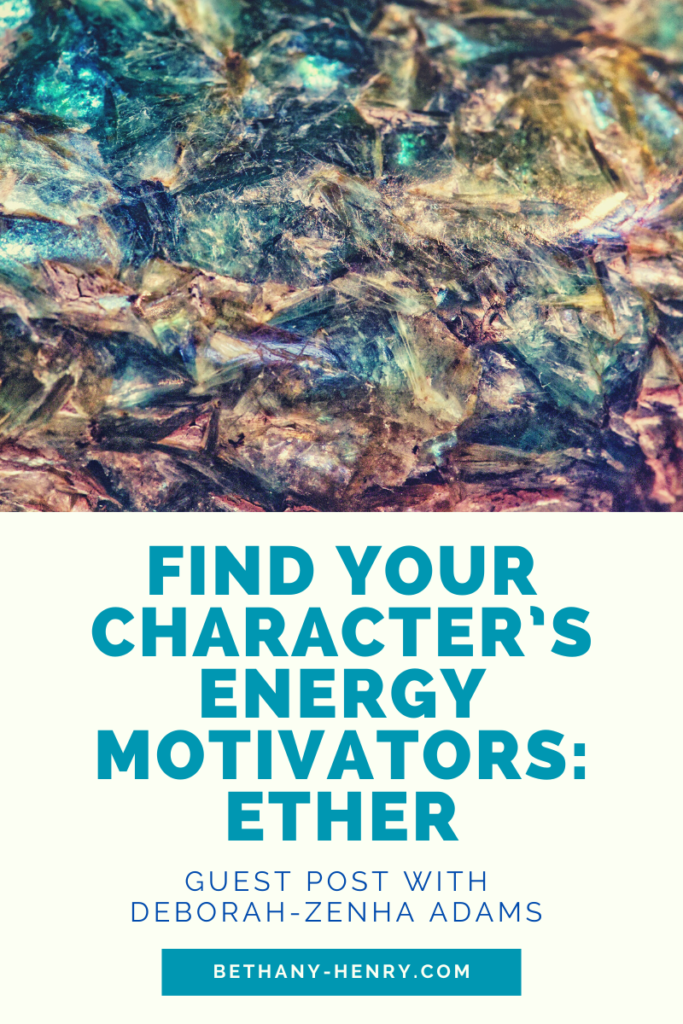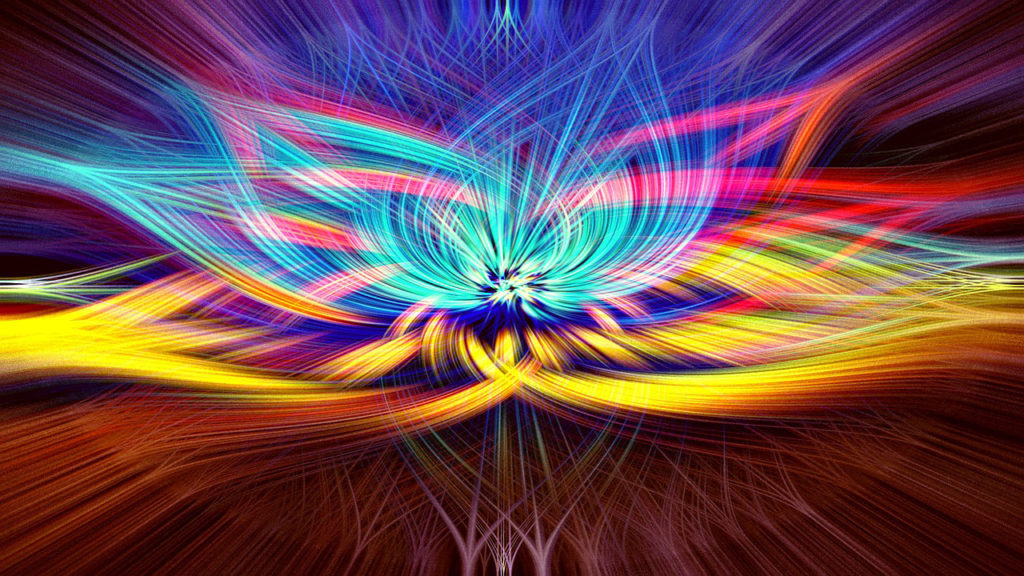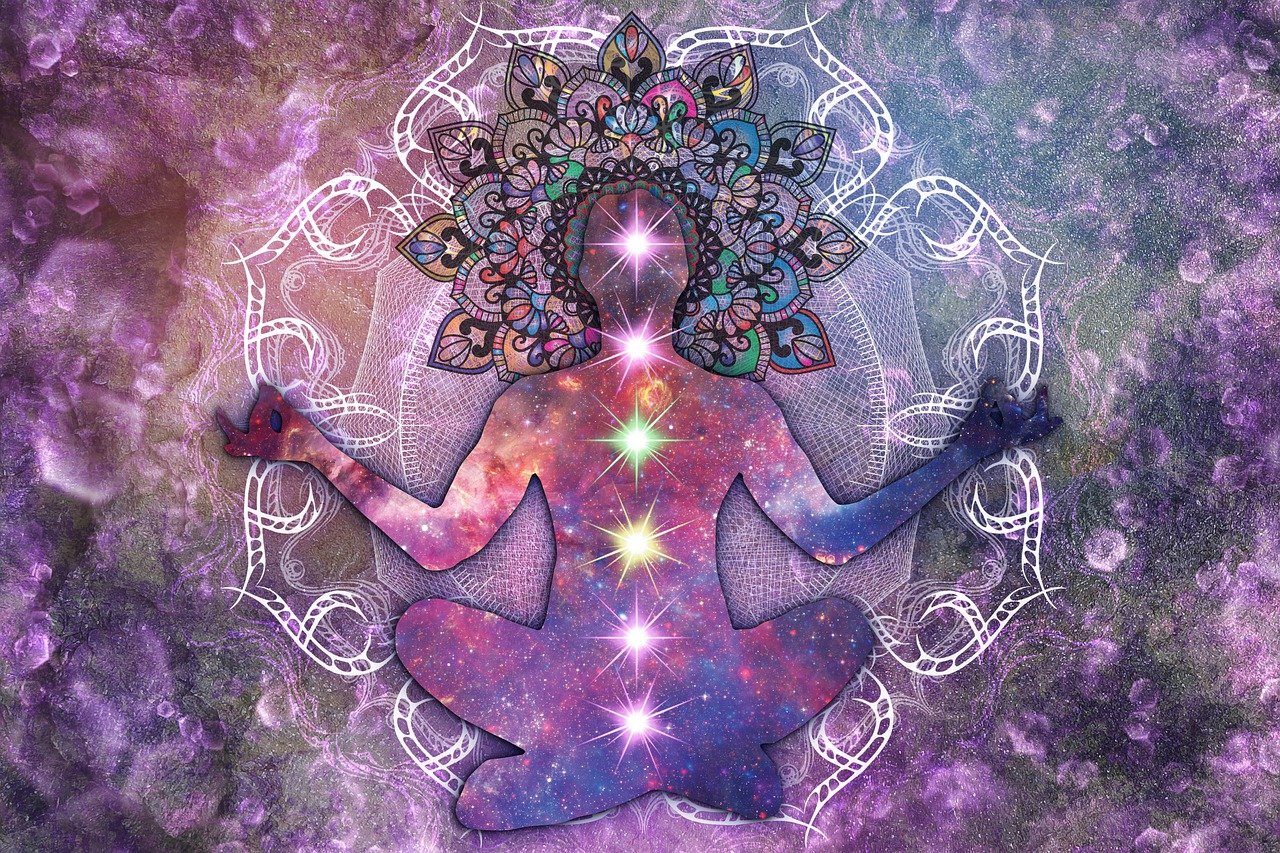
Today we have the privilege of having Deborah-Zenha Adams as our guest to teach us a bit about how we can use the concept of chakras to add depth to our fiction characters.
For further reading on creating characters you can check out the character development archives.
Looking at chakras as a way to build characters is a new concept for me and I’m thrilled to explore this topic further!
Without any further ado, take it away, Deborah!
Finding Your Fictional Character’s Energy Motivators
By: Deborah-Zenha Adams
How an ancient philosophy of energy can help you create better characters
It doesn’t matter what genre you’re writing, characters are the lifeblood of your story. No matter how perfectly-plotted, tightly-structured, and wildly creative your story is, readers might not stick with it if the characters are hollow, bland, or just plain unbelievable.
You get that. We all get that. Characters must be well-rounded and fully-realized, with both positive and negative qualities to make them realistic and relatable.
So why do our characters still sometimes ring hollow? More importantly, what can we do to ramp up the authenticity of the players in our fiction?
There are lots of charts and templates and lists of personality quirks that you can use to flesh out your characters, but here’s a caveat: you can’t just stick one trait onto an otherwise purely good or purely evil character and expect readers to fall for it.
Flaws come in clusters, and they come from a source. If you’ve tried to develop in-depth psychological profiles of your protagonist and antagonist but they still aren’t breathing, I’ve got a quick and easy tip to offer.
Try using chakras.

Image by Alexandra_Koch from Pixabay
What are chakras?
Chakra is a Sanskrit word meaning ‘wheel,’ and it refers to wheel-like masses of spinning energy that helps to maintain health within the body and mind. Sometimes the energy wheels will be called spinning disks or even flowers. Mind you, these aren’t physical objects, but part of the subtle energetic body. The concept of chakras is ancient, and found in a great many spiritual and philosophical systems.
It’s also a lot more complex than a blog post or a workshop can convey.
But have no fear. You don’t need to understand the fine points in order to create well-rounded and unique fictional characters. In fact, we aren’t going to refer to chakras again after this introduction. Let’s just call it energy and move forward. When you’ve tried this system once or twice, you’ll find that it’s both easy and fun to use, and it adds a wealth of dimension to your writing.
How can a character’s energy status be useful to you, the writer?
You’ve surely run across a character in a book or story that just didn’t resonate. Maybe you couldn’t quite put your finger on the problem, but that character never won your affection. The likeliest cause is that the author failed to go beyond the surface and connect the dots in that character’s personality.
Anyone can design a villain who is 99% stereotypical evil, and give him an affection for puppies. You know, just to make him “well-rounded.” While readers may not explore the why of it, they’ll know something’s off, something’s not working. They might even give up without finishing the story, or worse—never read that author again.
How do you fix a shallow character?
One way to find your character’s depth is by incorporating a cluster of related energetic traits. Let’s say your protagonist is anxious, nervous, or just vaguely tense about nothing in particular. Now a single instance of anxiety isn’t a symptom of anything in particular. Maybe she just drinks too much coffee.
But when your character is acting from an Earth Energy imbalance, for example, there will be a cluster of related behaviors. That character’s entire lifestyle will be affected—eating habits, housing, clothes, job, car, social interactions, you name it.
In this 7-part series of posts, I explain how to identify defining emotional and physical reactions to the world and how to use those clusters of energies to infuse life into your characters.
There are lots and lots of chakras, but I’m only using the primary seven in this series to give you an idea of how you might employ them in fiction.
This is the fifth part of a series of posts that exist across multiple blogs. You can find links to the other posts on my blog, and if you’d like more information you can grab the free Chakra Basics PDF from my website!

Image by Ben Johnson from Pixabay
Finding Your Fictional Character’s Energy Motivators: Part 5 — Ether
Using an ancient philosophy of energy can help you create better characters.
We discussed the four lower Energies in those previous posts. Now we come to the first of the higher level Energies—Ether.
This isn’t the ether that you learned about in chemistry class, nor is it the ether that some people think of as sky or heaven or the greater reaches of the atmosphere.
Ether, in the context of energy, is more closely related to the substance that permeates and surrounds everything, a substance that vibrates and moves itself and other energies. It is also called chi or qi or Akasha.
Characteristics of Ether Energy
The Ether Energy is associated with sound and expression of thoughts, with truth, and with communication. You’ll often find this energy is strong in people who:
- Have good communication skills
- Are patient listeners
- Move well with timing and rhythm
- Are creative
Ether Energy is also closely associated with messengers, writers, public speakers, and with knights in the Tarot. Ether Energy’s primary function is to serve as impetus for truth and as a source for connection.
A healthy Ether Energy is built on balanced Earth, Water, Fire, and Air. With Earth providing a stable and secure base, Water providing positive self-image and flow, Fire providing determination and vision, and Air providing movement, Ether Energy can help us communicate our feelings as well as facts and experiences that we know to be true.
Characters with Ether equilibrium are often hailed as profound communicators able to express in words those complicated concepts that many of us struggle to understand.
In literature, these characters are creative, unorthodox, sometimes mad, but always honestly expressive.
Classic Ether Energy Characters
Scheherazade (of the Middle Eastern collection of tales known as the One Thousand and One Nights) is the ultimate example of Ether. Yes, she was a creative storyteller, but her skills went beyond the story; she was able to communicate the emotion of her stories so well that her captor became her captive audience.
Characteristics of Ether Imbalance
Some of the symptoms of imbalance in Ether Energy might be:
- Difficulty expressing thoughts
- Fear of speaking
- Secretiveness
- Shyness
- Talking too much
- Gossiping
- Speaking lies
- Inability to be in silence
- Shouting
- Inability to keep secrets
An imbalance of Ether Energy can be summed up by the words “Listen to me!” even when it seems the character doesn’t want to be heard.
Because energy is constantly moving and changing, there is almost always an imbalance.
As mentioned in an earlier section of this series, every energy affects the energies above it. This means that your character with an uneven Ether Energy will also exhibit symptoms of imbalance in the areas of Light and Consciousness. (These areas are addressed in Parts 6 and 7 of this series.)
Classic Ether Energy Imbalanced Characters
Pinocchio: The best-known liar in the history of literature, poor Pinocchio had a tell that gave him away every time.
The Cigarette Smoking Man in The X-Files: A liar? Perhaps. Certainly CSM was a keeper of secrets. It wasn’t until the episode “Musings of a Cigarette Smoking Man” that we learned he was an aspiring writer whose work was constantly rejected and negated because of the truth it contained.
Tricksters: Every mythology has a trickster or liar to keep humans on our toes. Loki, Coyote, Satan—take your pick.
These are just a few characters from classic stories who likely suffered from Ether Energy imbalance. You can probably think of dozens of other characters from literature (and real life) with this same imbalance. Go ahead and leave your thoughts about them in the comments section.
Questions to ask about your character:
When you discover (or determine) that Ether Energy imbalance is present in your character, take some time to mull over the implications.
How does Ether energy imbalance affect your character’s behavior and outlook?
- Does she feel that her voice is never heard? That she’s been silenced? Or is she loud and strident?
- Does she express herself through an artistic medium, or is she a straight-talk, just-the facts kind of woman? Did she choose her method, or is it an inevitable outgrowth of her Ether imbalance?
- Does she speak up for herself and others? Is she hiding her thoughts, emotions, or knowledge? For gain, or out of fear?
- Is she a liar? If so, why? What does she gain from her lies? Or is she vehement about telling the truth, even when it hurts and distances?
- What caused the imbalance in the first place? Was it lifestyle, stress or trauma, a loss of connection to the authentic self? Was it caused by some outside force?
- What other symptoms might be present? Start with the brief list at the beginning of this post and extrapolate.
How to strengthen the Ether Energy association in your writing
You can reinforce the effect of Ether Energy by using subtle indicators of this imbalance.
For example, you might:
- Use words and phrases throughout your narrative that call to mind the Ether Energy qualities: ring, chime, buzz, etc., silence, resounding, secretive, hidden, blaring,
- Use the color light blue, perhaps in clothing, furnishings, cars, or eye color. What does this
color mean to your character—sky or depression, cold or comfort, a rare moon or a body of water? - Bring in other elements associated with this energy. Is your character a writer or public speaker, a publicist / spin doctor, or other media professional? Is she literally speechless? If so, how long has she been without a voice and what is the cause? Is someone lying about her? Is she a gossip or a victim of gossip? What secret is she hoarding, and how did she come to a choice to do that?

Practice & Prompt
Choose any character from your work in progress. Make a list of physical, mental, and emotional traits characteristics that you’ve already assigned to that character.
For example, let’s say you’ve written: settled, in a loving relationship, successful in her career, passionate about the work she does or about a cause she supports, has never told anyone about an incident in her past, is contemptuous of religion, and concentrates her energy in the here and now.
Taken together, these create a cluster of Ether Energy attributes.
Notice that her lower Energies are doing okay, but the imbalance appears to begin with Ether and extend into the higher Energies. This gives her a down-to-earth, grounded foundation, but maybe she lacks intuition, whimsy, or faith.
Does that work for or against your character? Is she on the verge of imbalance in other areas? Does she perceive it or ignore it or is she too practical to crave change?
How will communication problems hinder your character? Will lies and secrets make her situation worse? Or will it save her? How close is she to plunging over the edge because of her imbalanced Ether? Can she trust anyone to speak truth to her? Can she be trusted to tell the truth or is she an unreliable narrator?
Where did her imbalance originate? When and why did the imbalance fluctuate and grow stronger or weaker? What scenes relay this information to the reader?
Within the context of her story, how might the imbalance be mitigated?
What element of your theme is manifested in Ether Energy? How can you use the character’s imbalance to strengthen the theme and vice versa?
One or more of your characters will almost certainly be dealing with Ether Energy imbalance. Now that you’ve experimented with ways to use that imbalance to flesh out a character, you’ll want to move on to other characters and their imbalances.
Part of the fun of this character building system is watching how the energies dance with and poke at each other!
Thanks for learning more about creating characters through finding their energy motivators today!
Part 6: Light Energy will appear soon. You can find links to it and the other posts at Part 1-Earth Energy on my blog.
Deborah-Zenha Adams is an award-winning author of novels, short fiction, CNF, and poetry. You’re invited to learn more about her at www.Deborah-Adams.com.




